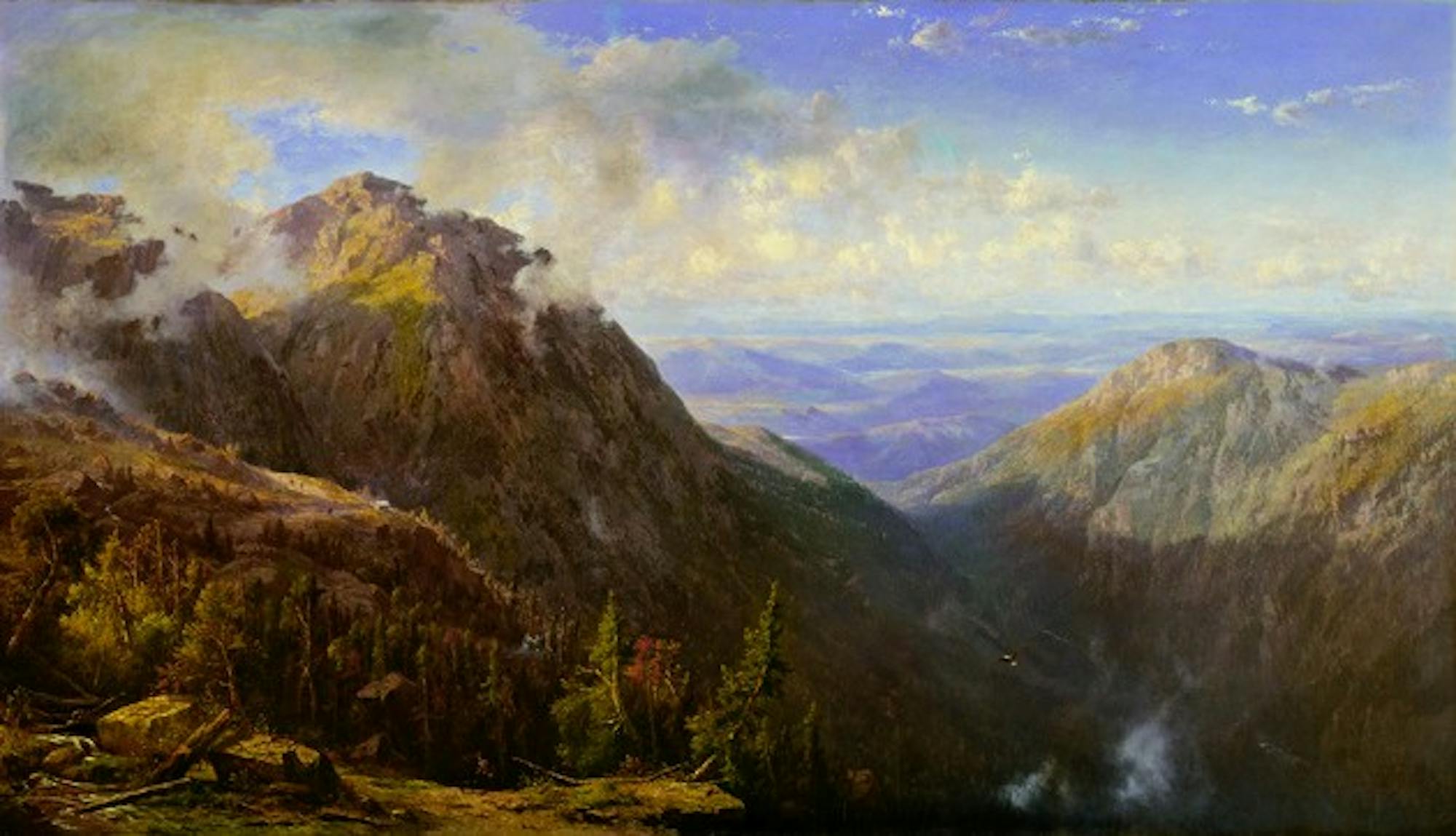The project's first installment, on view now through December 9, is "American Art at Dartmouth: Highlights from the Hood Museum of Art," an exhibition of more than 160 works that span the history of Dartmouth's American art collection. Among these works are the college's first acquisition, a Boston-made silver bowl given to founder Eleazar Wheelock in 1773, and its most recent, a painting by Jackson Pollock that pays homage to the Baker Library murals by Jos Clemente Orozco.
"It's beautiful," Sasha Plykina, a visitor to Dartmouth, said of the exhibit as her eyes wandered from paintings of White Mountain landscapes to vibrant nineteenth-century portraits and a display of New England silver. "I have been to museums throughout the world, but this exhibit gives me such a greater sense of art in America."
Both the size and the scope of the exhibit are unprecedented for a presentation of American art at Dartmouth.
"Normally, we have just one small gallery devoted to American art," Barbara MacAdam, the Hood's curator of American art, said. "Right now we have four."
More than fifty examples of the Hood's collection of American works on paper, including photographs, prints, watercolors and drawings are scheduled to supplement the exhibit on Sept. 22. This addition to the exhibit will mark the most works ever presented in a single exhibit at the Hood, according to MacAdam.
Choosing highlights from Dartmouth's 8,000-piece American art collection was no easy task, MacAdam said.
The selected works of art, which include pieces by such varied artists as Winslow Homer, Georgia O'Keefe, Augusta Savage and Gilbert Stuart, comprise an exhibit that not only represents the traditional strengths of the Dartmouth collection, such as portraits of college luminaries and New Hampshire landscape paintings, but also emphasizes the collection's recent focus on diversity. By locating works of art by women and minorities, of which many pieces were acquired only after the opening of the Hood Museum in 1985, the exhibit successfully tells of both the cultural context and the history of American art and specifically American art at Dartmouth.
The exhibit, which is organized chronologically, begins with 18th-century works of art in the Dorothy and Churchill Lathrop Gallery. Notable pieces include the iconic portrait of Eleazar Wheelock by Joseph Steward, Class of 1780, a John Singleton Copley portrait of Royal Governor John Wentworth and various items belonging to Daniel Webster, Class of 1801, fondly termed "Websterania" by the Hood employees. Included among Webster's effects are an unfinished portrait by Gilbert Stuart (as the accompanying placard notes, Stuart felt little inclination to paint backgrounds for his portraits during his later years), as well as Webster's desk chair and portraits of his two wives.
Nineteenth-century works of art continue in the William B. Jaffe and Evelyn A. Jaffe Hall Galleries. Here, paintings such as Lilly Martin Spencer's "The Jolly Washerwoman" and Benjamin West's "Hannah Presenting Samuel to Eli" chronicle Dartmouth's efforts to bridge historical gaps in its art collection and to acquire artwork that can be applied across an increasingly interdisciplinary curriculum. Among these galleries' most striking pieces are Harriet Hosmer's "Medusa," a marble bust that captures the duality of the mythic figure and Rgis Franois Gignoux's "New Hampshire (White Mountain Landscape)," a seven-foot-long painting whose very size and grandeur demonstrate the sentiment of Manifest Destiny that defines the work.
The exhibit concludes in the Israel Sack Gallery where art from 1900-1950, such as the collection's newest acquisition, Jackson Pollock's "Untitled (Bald Woman with Skeleton)," hangs on the back wall. The painting, c. 1938-41, draws its subject matter and iconography from Orozco's "Gods of the Modern World," a panel in Baker Library's murals. MacAdam described Pollock's darkly energetic painting, which appears to be a study for a mural of his own, as reflecting "escalating world tensions." Amidst the other paintings of the collection, she explained, "Suddenly, one senses the broader artistic and cultural context in which he was working."
"It's amazing to see his inspiration, his referencing other works. To me, that's part of being an artist," Lilian Mehrel '09 said as she studied Pollock's painting.
Surveying the exhibit, Mehrel reflected, "I hope that people come. Dartmouth students need more art in their lives."
The Hood will host an introductory tour of the exhibit on July 21.




